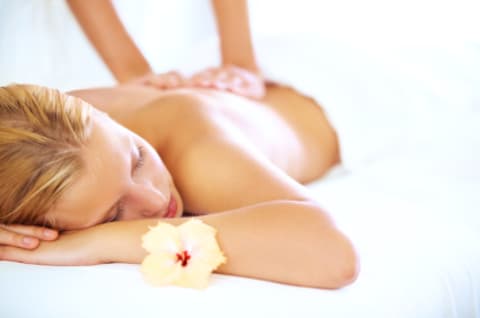Advertisement
Running and Rolfing: A Winning Combination


As I crossed the finish line, lungs pumping air, legs stretched out in a long stride, I had never felt better. While my personal finish line may have only been the Beekman Street entrance on the East River bike path and not in an Olympic stadium, I still felt like a champion. This summer after years away from running, I decided I needed to increase my cardio exercise. The endless hours of yoga, Pilates and Gyrotonic that I have been practicing for the last decade and a half have given me the fit body and mind that I desired, but I wanted to make sure my heart and lungs were getting the same workout.
My first run was slow and steady allowing me to gauge where my body was and if the exercised induced asthma I suffered as a child was going to give me any problems. After a mile I felt great, a bit strained, but knowing my limits and not wanting to push too hard, I called it a day. The first week went exactly like this until I was sidelined by shin splints and the memories came rushing back; the same thing had happened to me during training for my high school volleyball team.
Sitting with ice on my legs and googling shin splints, I came across a fascinating article by Dr. Jonathan Cluett, who wrote, “The term shin splints is a common misnomer in sports medicine. It does not imply a specific diagnosis; rather it is the symptom of pain over the front of the tibia bone. The pain from shin splints can be due to either problems of the muscles, the bone, or the attachment of the muscle to the bone.” A light bulb went off! With all the work that I do in the wellness industry and the network of body workers available to me, it was time to trying Rolfling and see if it could help remedy my problem.
Similar to massage in that you lie on a massage table and work one-on-one with a Rolfer certified in this hands on treatment, Rolfing deeply works the fascia or the connective tissue of the tendons, ligaments and muscle casing that surrounds the muscle fiber. The goal of Rolfing is to target specific areas and scar tissue build up that has pulled your body out of alignment causing increased tension and strain which leads to pain. Sure enough my Rolfer immediately went to work on my knees, ankles and feet releasing the tight muscles and lengthening the tendons. While the treatment felt like a deep tissue massage, (some describe it as very painful, but I know I have a high threshold for pain), I left feeling great and with exercise homework which when practiced daily is supposed to help retrain my movement patterns and therefore alleviate my pain.
After a few sessions, my body is feeling better than ever. I do leave the Rolfing sessions sore and the first few days of exercise afterwards has led to my legs getting tired faster. My Rolfer assures me that this means the treatment is working as I’m using my muscle groups in a new way therefore they need to build up endurance and strength. Watching the Olympics, I have been inspired by U.S. Olympic athlete Sanya Richards-Ross, who incorporates Rolfing into her training routine and is running in London’s 2012 400 meter race toward gold. While I may not be running to win any medals on the world’s stage, Rolfing has enabled me to keep striding toward my finish line with a healthier, pain free body.